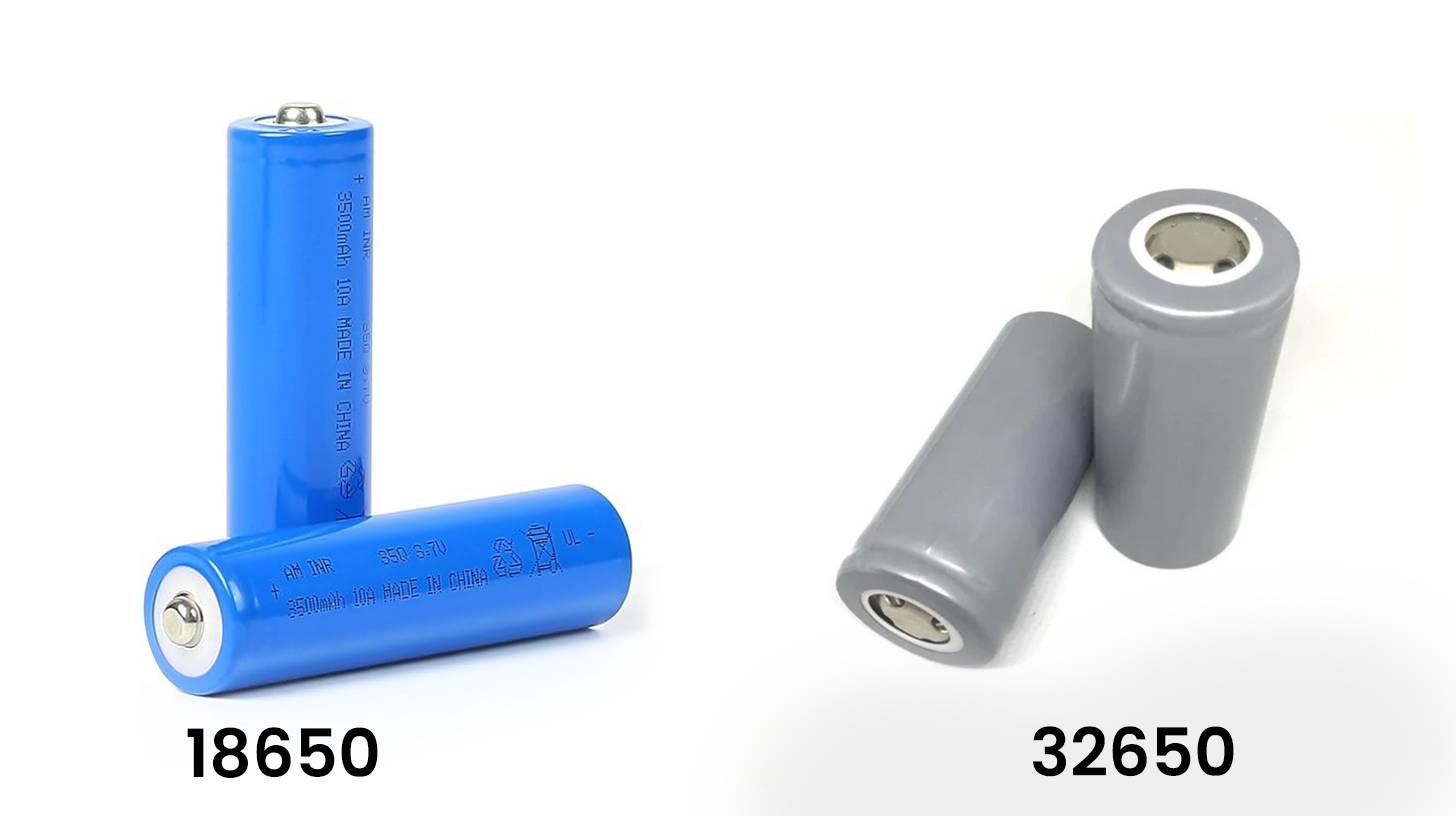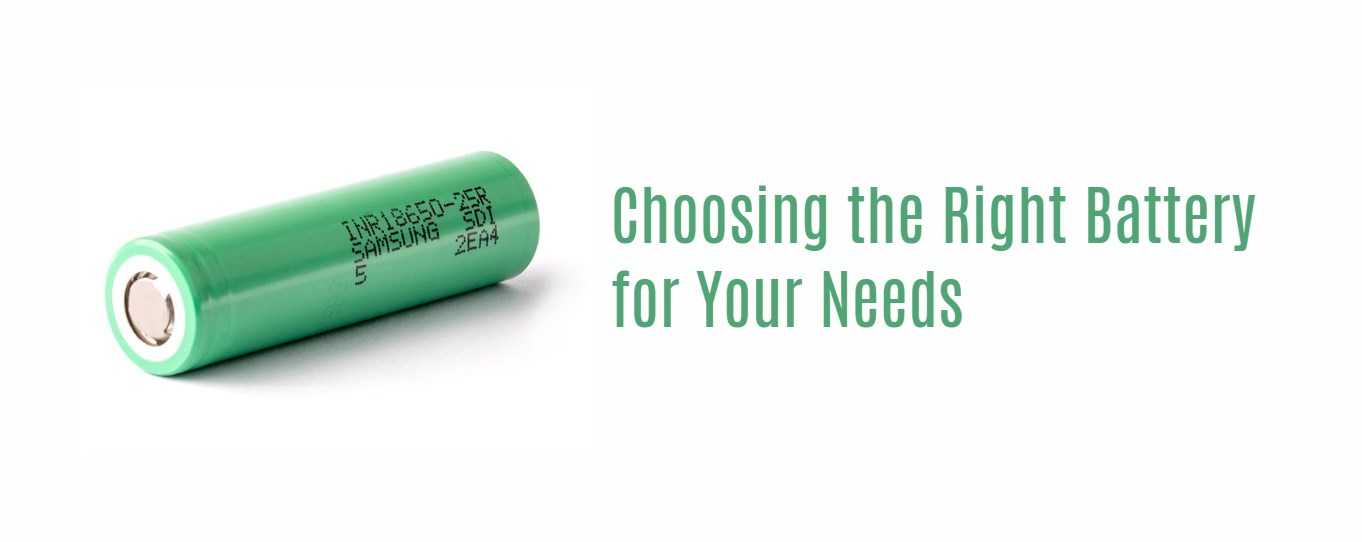When comparing lithium batteries, such as the 18650 and 32650, the main difference lies in their battery capacity. The 32650 battery is generally believed to have a larger capacity compared to the 18650 battery. This means that the 32650 battery can store more energy and provide longer operating times. However, it is important to consider the specific requirements of your application and the size constraints, as the larger size of the 32650 battery may limit its usability in certain devices.
18650 VS 32650 in Size and Physical Dimensions
- 18650 Battery: The 18650 battery is known for its compact size, with a diameter of approximately 18mm and a length of about 65mm. This smaller form factor makes it suitable for applications where space is limited or weight needs to be minimized.
- 32650 Battery: In contrast, the 32650 battery is larger, with a diameter of around 32mm and a length of approximately 65mm. The increased size allows for higher capacity and power output, making it ideal for applications that require more energy storage and longer operating times.
- Application Considerations: The choice between the 18650 and 32650 batteries depends on the specific requirements of the application. If compact size and lightweight design are crucial, the 18650 battery may be preferred. However, if higher capacity and power output are essential, the 32650 battery would be a suitable choice.
18650 Battery
The 18650 battery, named after its dimensions (18mm in diameter and 65mm in length), is renowned for its compact size. This makes it an excellent choice for portable electronic devices such as laptops, flashlights, and handheld tools. The smaller form factor allows manufacturers to design sleek, lightweight products without sacrificing power output.
32650 Battery
In contrast, the 32650 battery boasts larger dimensions (32mm in diameter and 65mm in length), offering a greater volume for increased capacity and power. This size advantage makes it suitable for applications requiring higher energy storage, such as electric vehicles (EVs), solar energy storage systems, and large-scale industrial equipment.
Wholesale lithium golf cart batteries with 10-year life? Check here.
18650 VS 32650 in Capacity and Power Output
- Capacity and Power Output: The 32650 lithium cells typically have a larger capacity and can handle higher currents compared to the 18650 cells. This means that the 32650 batteries can store more energy and deliver higher power output, making them suitable for high-power applications that require a continuous and robust power supply.
- Energy Density: On the other hand, the 18650 batteries offer higher energy density, which refers to the amount of energy stored per unit volume or weight. This higher energy density makes the 18650 cells more suitable for applications where space and weight constraints are critical factors.
- Application Considerations: When choosing between the 18650 and 32650 batteries, it’s essential to consider the specific requirements of your application. If high power output is a priority and energy density is less critical, the 32650 cells would be a suitable choice. However, if space and weight constraints are significant, and energy density is more important, the 18650 cells would be a better fit.
18650 Battery
Despite its smaller size, the 18650 battery is capable of delivering substantial power relative to its volume. It typically features a lower capacity compared to the 32650 variant but excels in applications with moderate power demands and space efficiency. This battery is a popular choice in consumer electronics and portable tools where weight and size are critical factors.
32650 Battery
Thanks to its larger physical size, the 32650 battery offers significantly higher capacity and power output. This makes it ideal for devices and systems requiring sustained, high-power performance over extended periods. Electric vehicles, energy storage solutions, and power tools benefit from the robust energy density and long cycle life that the 32650 battery provides.
Want OEM lithium forklift batteries at wholesale prices? Check here.
18650 VS 32650 in Discharge Characteristics (C-rate)
- Discharge Characteristics: The C-rate is an important factor to consider when comparing the discharge capabilities of lithium batteries. It indicates the rate at which a battery can be discharged relative to its capacity. While specific discharge characteristics may vary, it is generally observed that 32650 cells offer larger capacity and higher current handling capabilities compared to 18650 cells.
- Higher Current Handling: The ability of 32650 batteries to handle higher discharge rates allows them to deliver higher currents, making them suitable for applications that require high power output. This makes them ideal for devices that demand continuous operation at higher currents, such as electric vehicles, power tools, and high-performance electronics.
- Application-Specific Considerations: When selecting between the 18650 and 32650 batteries, it is essential to consider the specific requirements of your application. Factors such as power demands, discharge rate, and desired operating times should be taken into account to ensure the chosen battery can meet the performance needs of the application.
18650 VS 32650 in Cost
- Cost Factors: The cost of a lithium battery can be influenced by several factors. These factors include battery capacity, battery chemistry, manufacturing processes, and market demand. Each of these elements contributes to the overall cost of the battery and can vary between different battery models and manufacturers.
- Cost Comparison: In general, 18650 cells tend to be more affordable compared to 32650 cells. This can be attributed to factors such as economies of scale, as 18650 batteries have been widely used for a longer time and have a more established market. However, it’s important to note that the cost comparison may vary depending on specific factors like battery capacity and chemistry.
- Lifespan Considerations: While 18650 cells may have a lower initial cost, it’s crucial to consider the lifespan of the batteries. 32650 cells often have a longer lifespan, which means they can provide more cycles of use before needing replacement. In certain applications where battery longevity is critical, the longer lifespan of 32650 cells can offset their higher initial cost over the long term.
- Application-Specific Analysis: When selecting between 18650 and 32650 batteries, it’s essential to consider the specific requirements of your application. Factors such as cost constraints, desired battery lifespan, power demands, and available space should be taken into account to determine the most cost-effective and suitable option.
Choosing the Right Battery for Your Needs
Application-Specific Considerations
The decision between the 18650 and 32650 batteries hinges on your specific application requirements:
- Portable Electronics: Opt for the 18650 battery if you prioritize compact size and moderate power needs, ideal for smartphones, laptops, and smaller gadgets.
- Energy Storage Systems: Choose the 32650 battery for applications requiring high capacity, long cycle life, and robust power output, such as EVs, solar energy storage, and industrial equipment.
Trade-offs: Size, Capacity, and Cost
Ultimately, selecting the right lithium-ion battery involves balancing size, capacity, and cost considerations. Understanding your device’s power demands and operational environment is crucial to maximizing performance and efficiency.
Conclusion
Both the 18650 and 32650 lithium-ion batteries offer unique advantages. The choice ultimately depends on matching the battery’s characteristics with the specific requirements of your application. Whether you prioritize compactness and versatility or seek enhanced capacity and power output, making an informed decision will optimize the performance and longevity of your electronic devices or energy systems.
For more information on selecting the right lithium-ion battery for your needs, or to explore our range of high-quality batteries, visit our website or contact us directly. We are committed to providing you with the knowledge and products you need for safe and efficient power solutions.








